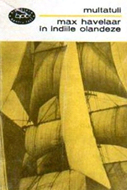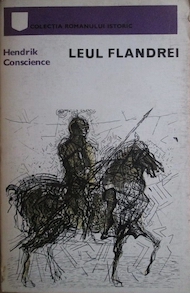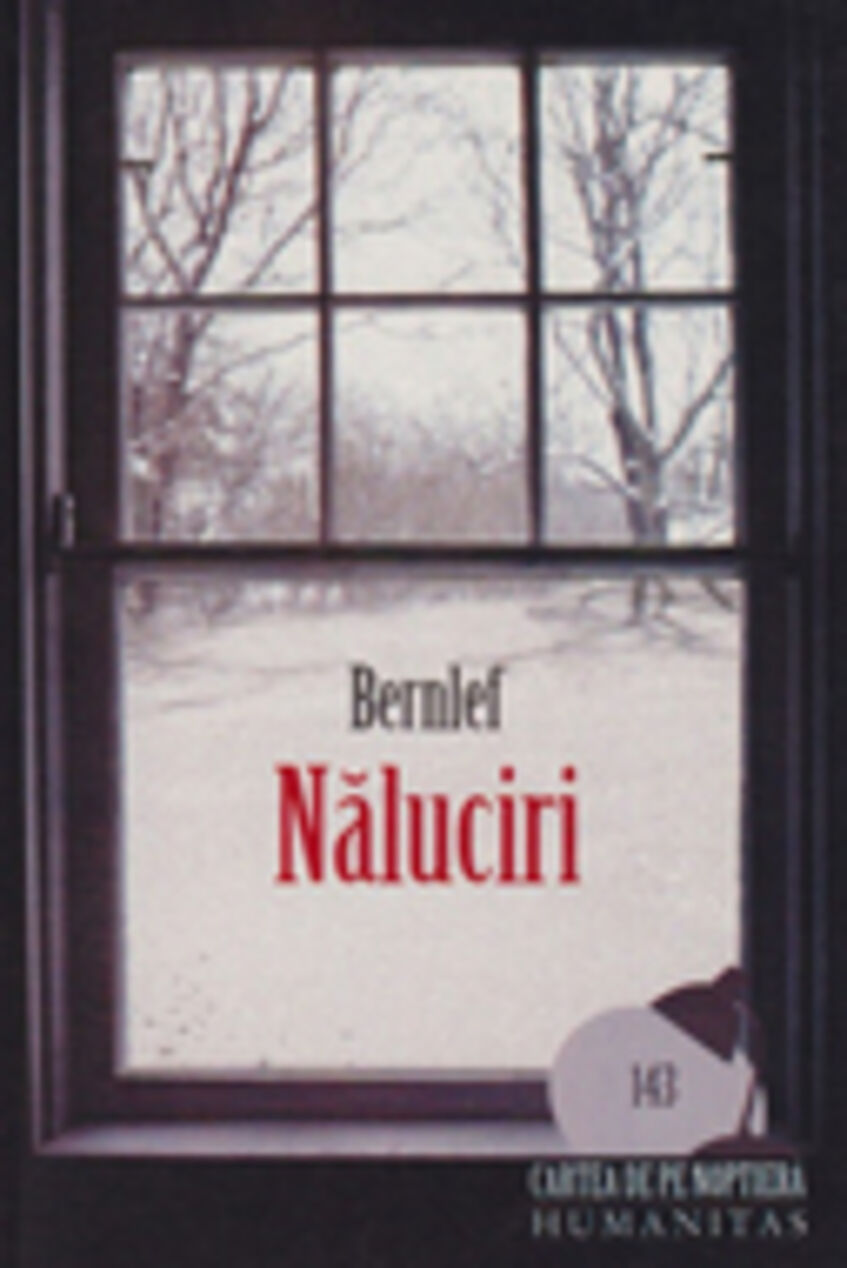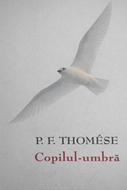Translating Dutch Literature to Romanian
A Stream of Happy Coincidences
Two peripheric linguistic spaces often only meet by sheer coincidence, especially when it comes to literary works. Yet these coincidences are happy, fruitful ones. The first diplomatic relations between the Netherlands and Romania started in 1879, when King Carol I addressed a letter to King William III of the Netherlands in which he acknowledges the independence of Romania. However, this did not immediately lead to the exchange of texts, let alone an exchange of literary texts.
Talking to children
It is yet unclear when the first direct translation from Dutch into Romanian was published. Researching the existing, still incomplete data bases, I found the translation of a pedagogic book written by Jan Ligthart (1859-1914), known in the Netherlands as a leading pedagogue and the literary father of Ot and Sien, two legendary children from Drenthe. His romanticized stories were popular until after the Second World War and were written by Jan Ligthart together with Hindericus Scheepstra. Ligthart’s work gained international attention and it comes as no surprise that Romanian pedagogues from the interbellum, a period of political, social and academic freedom, picked up on this.

Jan Ligthart. "De vorbă cu copii" (Talking with Children), translated by Ioan G. Marinescu, teacher and former director of the Normal School “Carol I”, as the cover states
In 1914 Ioan G. Marinescu (1869-1954) published a translation entitled De vorbă cu copii[i] (Talking to children) by Jan Ligthart. Most probably, he used a French translation as source text. Marinescu, the school teacher and former director of the Normal School “Carol I” (which in 1887 had been moved by King Carol I from Bucharest to Câmpulung-Muscel, a small historic town some 150km from the capital) also translated works by Alfred Binet, Jules-Jean van Biervliet, Édouard Claparède, Adolphe Ferrière, and also by the famous American pedagogue John Dewey. Jan Ligthart’s ideas were inspired by Tolstoy and Rousseau and implied a more open idea to pedagogy, advocating for children to be their teachers equals. These ideas were circulating in Romania at a period when democratizing efforts were being made in order to educate the general public. Moving the concept of this school to the smaller town and investing in education in a decentralised manner must have meant a great opportunity for a dedicated teacher such as Ioan G. Marinescu. Jan Ligthart’s work and life were a great inspiration for Marinescu, as shown by another translation from 1928. This time, Marinescu translated Jan Ligthart’s biography written by J.W.L. Gunning. The title Un învățător. Viața și opera lui Jean Ligthart (A teacher. The Life and Works of Jean Ligthart) and the use of Jean instead of Jan gives another clue that the source language must have been French. The liberal and open attitude of a pedagogue like Jan Ligthart found a like-minded scholar in the first years of twentieth century Romania.
A Lost Farce
Strangely, almost no other translations from Dutch are to be found during the interwar period, apart from a novel by Justus van Maurik jr. (1846-1904), a Dutch novelist and cigar maker from Amsterdam and one of the journalists who worked for the famous weekly magazine De Groene Amsterdammer, which still exists. In 1929 the novella O farsă gazetărească. Roman (A Newspaper Farce. A Novel) is published in the translation of P.S. Adelfi, in a prose collection called Lectura. Floarea literaturilor străine (Lecture. The Flower of Foreign Literatures), together with translations of German and British short stories. The Romanian interwar years are known for the diversity of newspaper publications. Choosing a novella about a newspaper farce fits quite well in the Zeitgeist. Moreover, Justus van Maurik jr. was a contemporary of the renowned Romanian satirical playwright Ion Luca Caragiale, also an intellectual from Bucharest who wouldn’t shy away from pranks and practical jokes, as shown in his comedy A Lost Letter. Which source text Adelfi used for his translation is unclear.
Another interesting example of a novel that once circulated through a lot of countries is the autobiographical novel Rubber. Roman uit Deli (1931) written by Madelon Szèkely-Lulofs, A Dutch writer born in the Dutch East Indies, who married a Hungarian planter. Cauciuc. Un roman din Sumatra (Rubber. A novel from Sumatra) is the name of the Romanian translation by Livia Poenaru which appeared in 1943. It is unclear what the source language was, but the translation is thoroughly made and includes a glossary of native words and a preface. The pattern that would prevail in the years after the 1989 revolution, namely that success in other countries and multiple translations (Rubber was translated in 15 languages) is seen as proof for the success of literary works in the native language, was also valid in the interwar years.
The modern Don Quixote and Till Eulenspiegel

The first translation of Max Havelaar via a German translation in 1948 at the Communist State Publisher
Two stories from the famous Max Havelaar “Saidia și Adinda. Două legende” (“Saidia and Adinda. Two legends”) appeared in 1936, translated by N.N. Botez, known as a translator from German. The complete Max Havelaar would be translated in 1948 via a German intertext by Silvia Mărgărit. The book is ideologically used as an instrument of class awakening. As the cover says: “After Harriet Beecher Stove’s Uncle Toms Cabin, Multatuli’s novel is the second accusation against the system of colonial exploitation.” Multatuli is called a modern Don Quixote in the ardently written preface, where the editors of Editura de Stat (State Publisher) emphasize the struggle that Multatuli had to undergo in order to get his story through to the public. Even though the book is now mostly forgotten, Editura de Stat states, Multatuli had been proven right by two things: by the present-day awakening protests in the colonies and by the rise of the new democracies (amongst which Romania should be counted) that have succeeded in their battle against the capitalist world. The preface goes even further stating the implication of religion in the imperialist oppression of the native population, warning against its influence. In short, Multatuli’s train of thought is made to fit all too well into the communist ideology and its foes: religion, the opium of the people and the capitalist, imperialist world.

Max Havelaar. The translation from Dutch by H.R. Radian in 1967
It was not until 1967 that H.D. Radian translated the book directly from Dutch. Interestingly, the preface to this edition, written by Alexandru Sever, a leading Romanian prosaist and playwright of Jewish origin, starts with recounting the fact that Eduard Douwes Dekker first wanted to be a preacher and emphasizing that he managed to do so though the writing of Max Havelaar: “To preach, that was his destiny!” Yet, this longer preface uses a more neutral tone, challenging the idea that Multatuli changed the whole imperialist system. The writer is considered great, but as a great literary reformer and as the best writer of the nineteenth century in the Netherlands. Sever continues summarizing the novel and even analyzing the colonial or post/anticolonial quality of the book. Even though he concludes that the colonial system was rotten altogether, his reading of the novel is quite careful and balanced, as the following quotation shows: “One gets the impression that what Havelaar actually denounces is the abuse of the native Regent, rather than the complicity of the Dutch authorities; one gets the impression that what is unhuman is rather this system of autochthonous serfdom, rather than colonialism itself.” Sever also reflects on the former preface from 1948, stating that there is nothing Don Quixote-like in Max Havelaar, maybe just the fact that he too cannot act efficiently against reality. Sever rejects the unicity of Multatuli’s endeavor, remembering that the abolition of slavery is a common topic of the nineteenth century, rather comparing Max Havelaar to The Legend of Thyl Ulenspiegel and Lamme Goedzak by the Belgian writer Charles de Coster and their protagonists.
“In short, Havelaar is not a revolutionary. He is generously rebellious,” Sever ends his critical introduction, a romantic who did not have the patience to polish his fragmented oeuvre, full of travesties with sparks of genius. Within 20 years, the reception of Max Havelaar in Romania turned from a fervent ideological weapon to a calm exposition of a novel that belongs to world literature. The Stalinist period had ended, in 1964 Ceaușescu had installed a political thaw that culminated in 1968 with him condemning the invasion of Czechoslovakia during the Prague Spring. It is therefore not necessarily surprising that the tone is calmer, more literary and open. The strong Orientalizing cover from 1948 makes place for a more general, romanticizing view of Max Havelaar.
The boom of translations during the Communist Period
One might not expect a boom of translations from Dutch until the fall of communism, but as sheer coincidences go, there was one dedicated translator during the communist years. H. R. (Henri) Radian took it upon himself to dedicate most of his translating career to Dutch literature. Radian (1907-1992) was an architect (his book on architectural proportions published in 1981 is still being used by architecture students), as well as a polyglot translator from Spanish, Portuguese and German (Erich Kästner, Friedrich Dürenmatt). He even published an Esperanto dictionary (under the pseudonym Petre Firu). Probably as a result of a visit to The Netherlands in 1928, Radian started learning the language, using a Dutch-French dictionary. He began his career as a translator from Dutch in 1956 with a socialist classic Fata cu părul roșu (The Girl With Red Hair) written by Theun de Vries, which was a hit in many socialist countries, but continued afterwards with classics such as Multatuli, as stated above, Vondel, Hildebrand, Conscience (he translated Leul Flandrei (The Lion of Flanders), while his wife, Sanda Radian, translated short stories by Conscience), Louis Couperus, Simon Vestdijk, Hugo Claus, Hella Haasse and Herman Teirlinck, prefaced by leading Romanian intellectuals like Andrei Pleșu or Gabriel Liiceanu, proving the central position of Dutch literature and also of Radian as a translator.
The well-known socialist novel The Girl With Red Hair by Theun de Vries
One of Radian's Huizinga translations, with an abstract cover from Univers

Leul Flandrei, the Romanian translation of the famous Flamish Lion of Flanders

The surrealist collection of short stories by Hugo Raes, Left of the Helicopter Line
Radian is also renowned for his Huizinga translations: Amurgul Evului Mediu (Autumntide of the Middle Ages, in 1970, 1993, 2002, 2021), Erasm (in 1974), Homo Ludens (in 1977, 1998, 2003, 2012) and Cultura olandeză în secolul al XVII-lea (Dutch Culture in the 17th Century in 1991) and translations of biographies of known painters such as: Jan Steen, Johannes Vermeer and Rembrandt van Rijn. His diverse catalogue includes contemporary authors like Oek de Jong and Heere Heeresma, books that were not necessarily compliant with the communist ideology. Radian also translated science-fiction stories by Hugo Raes (La stânga liniei de elicoptere, Left of the Helicopter Line, 1974). Radian was a renowned translator who had managed to influence publishing houses to publish books of his own choice. Gheorghe Nicolaescu, the translator that would dominate the Dutch literary translations into Romanian starting from the nineties, remembers that during the seventies and eighties one or even two translations from Dutch would be published every year.
Radian’s work not only enjoyed recognition in Romania, but also in The Netherlands. In 1976 he received the Martinus Nijhoffprijs for his translations. As Jan Willem Bos, Romanian-Dutch translator, cultural mediator and mentor for young translators, recounts, “a shy man, the textbook example of an old school Eastern European Book worm” came to The Hague to accept his prize and was worried about the quality of his spoken Dutch, that he didn’t have the opportunity to practice very often. His spoken Dutch, however, was quite all right and he was welcomed with a warm round of applause.
The big blast of Dutch literature after 1989 and future possibilities
The second promotor of Dutch literature in Romania in chronological terms but definitely not second in importance, is Gheorghe Nicolaescu (1953). Between 1974-1979 he got the opportunity to study German at the University of Leipzig, where he came upon Dutch by chance. It was a match made in heaven, he liked the language and starting learning it. Back in Romania he thought German in high schools and began translating from German and later on from Dutch. In 1984 he published Ceata lui Jan de Lichte (The gang of Jan de Lichte), the translation of the picaresque novel, Robin Hood like story written by Louis Paul Boon, the Flemish writer with socialist sympathies. Nicolaescu first published using the pseudonym Marcu Milescu, but dropped the pen name shortly afterwards. Ceata lui Jan de Lichte was a great success, as were a lot of translated books during that time. It was published in 30.000 copies, an amazing number from today’s perspective. Nicolaescu explains this high number by pointing out that in those times translated books were a window to the outside world and were devoured by the public who waited in cues to get a copy.
Nicolaescu refused to become a member of the communist party and therefore had to wait until the end of the regime to get a position at the university and to start travelling to the Netherlands. From 1998 onwards, he would become a devoted guest in the Vertalershuis (Translator’s House), returning to Amsterdam (and sometimes Antwerp) every year until the Covid Pandemic. He would often describe these visits as “a breath of fresh air” during the chaos of the first postcommunist years and the craziness of university life later on. He became the most prolific Romanian translator from Dutch, having already translated around 30 books. He is still active and he mostly translates contemporary literature by diverse authors such as Harry Mulisch, Connie Palmen, Hugo Claus, Cees Nooteboom, Marcel Möring, Bernlef (providing a wonderful translation of Hersenschimmen, Out of Mind in 2008), Annelies Verbeke, Arnon Grunberg, Margriet de Moor, Marente de Moor and Hendrik Groen. See here a full list of his translations.

The first translation of Gheorghe Nicolaescu: Ceata lui Jan de Lichte by Louis Paul Boon

The translation of Berlef’s Hersenschimmen by Gheorghe Nicolaescu

Anne Frank’s diary, translated directly from the Dutch original, as the cover states

Margriet de Moor’s The Virtuoso with the name of the translator on the cover page
He was the first to translate the complete journal of Anne Frank from the original Dutch. The book was published under the title Jurnalul Annei Frank. 12 iunie 1942 – 1 august 1944 at Humanitas, the most important publishing house in the country. His most recent translation is the journal of Etty Hillesum, likewise at Humanitas, which published around 15 Dutch writers, including Grunberg, Nooteboom, Arthur Japin and P.F. Thomèse (translated by Andrei Anastasescu), Eddy de Wind (translated by Alexa Stoicescu) and others.
Book Launch Eddy de Wind
Nicolaescu is well known for his meticulous approach to translating, characterized by his attention to detail and his insistence on using the term “neerlandeză” instead of “olandeză” so as to get aligned to the term used in other European languages. His insistence had another goal: to get the Romanian public better acquainted to the language, literature and culture of The Netherlands and Belgium. His integrity also came in handy when negotiating better translation fees and because he served as a mediator between Romanian publishing houses, that were sometimes all too happy to pay the translator less or nothing at all, and the Dutch Foundation for Literature.

The wonderfully poetic Shadow-Child by Thomése, translated by Andrei Anastasescu

Orașul ocupat (Occupied City) written by Paul van Ostaijen and translated by Alexa Stoicescu

The untranslatable novel of K. Schippers, Unde ai fost (Where were you)
Perhaps Gheorghe Nicolaescu would have translated much more if most of his time had not been filled with his duties at the University of Bucharest and the managing of the Dutch Department, where he taught, developed the curriculum and organized translation workshops with passion until 2018. Most of the translators from recent years were his students: Andrei Anastasescu (who now mainly (and excellently) translates from German), Anda Dragomir (with the beautiful translation of Nesuferitele zile de luni, Blue Mondays, Arnon Grunberg’s debut novel), Valentina Țirlea (Geert Kimpen and Abdelkader Benali), Alexa Stoicescu (now head of the Dutch Department, who has up to now translated around 15 titles, including works by K. Schippers, Adriaan van Dis, A. Alberts, Eddy de Wind, and Orașul ocupat (Occupied City) by the Flemish avant-gardist Paul van Ostaijen, non-fiction, child and youth literature), Irina Anton (translator of Ilja Leonard Pfeijffer in 2019, Tonke Dragt in 2020 and Annet Schaap in 2021), Cătălina Oșlobanu (who translated Marieke Lucas Rijneveld, together with Alexa Stoicescu in 2021), Ovidiu Achim (mostly a translator of non-fiction, his latest translation being the bestseller by journalist Rutger Bregman, a text that he worked on together with Elena-Simona Iurea) and many others, including aspiring newcomers.
There are other important and notable translators from Dutch. Maria Valer translated Arthur van Schendel and Couperus in the seventies. Monica Săvulescu-Voudouris, a writer who lived in the Netherlands and translated Leon de Winter, Jeroen Brouwers, Hella Haasse (Străin pentru totdeauna, the translation of Oeroeg) and Marga Minco. Jan H. Mysjkin (a Belgian translator from Romanian and French into Dutch) works with the Romanian poet Doina Ioanid and together they have already published about ten books, mainly contemporary poetry, but also classics like the grotesque stories of Paul van Ostaijen and Cașcaval (Cheese) by Willem Elsschot. Luminița Bobu has supplemented the long list of Nooteboom translations with Philip și ceillalți (Philip and the Others, 2013) and Ziua morților (All Soul’s day, 2015), Anamaria Androne-Bouman (A Woman Goes to the Doctor by Kluun, 2012) and Oana Marin (The Last Love of My Mother by Dimitri Verhulst, 2021 and War Diary by Hanny Michaelis, 2022).
During communism, most of the translations appeared at the publishing house Univers (with the help of the very skilled editor Mircea Bucurescu, who worked on ‘Nordic languages’ and later on even translated Hubert Lampo). Univers remained true to its Nordic cause till late in the 2010s. Diana Crupenschi, editor in chief, has always been fascinated by Dutch Literature and has put in a lot of work to get many books translated after 1989. In 2007 she came in contact with the work of K. Schippers (1936-2021) at the Frankfurter Messe and loved the English sample from his novel Waar was je nou (Where were you). The book had not been translated to any other language and was known to be untranslatable. But she really wanted to be able to read it in Romanian. Through the mediation of Gheorghe Nicolaescu, she came in contact with Alexa Stoicescu, still a MA-student who hadn’t translated anything yet. Alexa loved the idea as well and started a mentorship program with Jan Willem Bos, which was financed by the Dutch Foundation for Literature. When she met K. Schippers in 2008, frustrated about a fragment she could not fully understand, the writer said: “Oh, yes, it sounds great, right?”. “It does,” Alexa replied, “but what does it mean?”, to which he said: “Meaning? Who knows about meaning? Just do whatever feels right.”
Happy coincidences like that.
Since the Univers period very diverse, smaller and bigger publishing houses have started to be interested in books from the Netherlands and Belgium: from the two biggest ones (Humanitas and Polirom) and midrange publishers like Paralela 45, Curtea Veche, Trei, Pandora M, Casa de Editură Max Blecher to small, courageous initiatives like FrACTalia (Paul van Ostaijen) and Signatura (illustrated quality children books).
Summing up of the translators and their works does not say enough about their passion and assiduity with which they managed to get contracts, the encounters and the fruitful discussions with their writers and the countless hours they spent making sense of the beautiful Dutch language. 2008 is known as the year with the most translations from Dutch to Romanian. Seven books appeared in translation. Since then, no other year has managed to top that performance but the variety of titles recently translated from Dutch show that there is enthusiasm. Many great titles still await. The post-war classics still need to be translated, Reve, Blaman, Hermans, Boon, Fritzi Harmen van Beek, and many others. The Romanian reader, who is not shy of big existential questions and also appreciates some Dadaist absurdity, would devour them. Postmodern works by Peter Verhelst or Atte Jongstra would be read with great ardour, as would postcolonial and intercultural literature. Not to forget Dutch and Flemish children’s literature. The millennial novels, the works written from 2010 onwards on trauma, queer, ecocriticism, posthumanism, intersectionality and so on could also count on many (young) Romanian readers. The translation choices thus far have multiple explanations: the involvement of the literary translator and his/her connections, interested publishing houses, the financial support from the Dutch Foundation for Literature and Flanders Literature and a stream of happy coincidences.
(Alexa Stoicescu)
